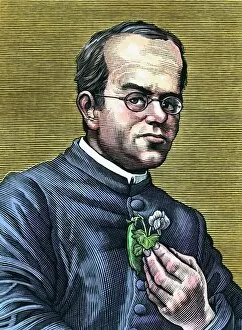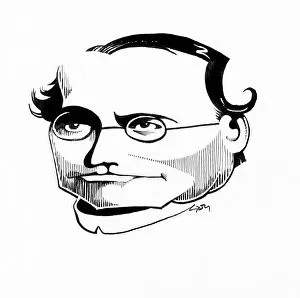Selective Breeding Collection
"Unleashing Nature's Potential: The Art of Selective Breeding" In the late 19th century
All Professionally Made to Order for Quick Shipping
"Unleashing Nature's Potential: The Art of Selective Breeding" In the late 19th century, an Austrian botanist named Gregor Mendel revolutionized the field of genetics with his groundbreaking experiments on pea plants. His work laid the foundation for a practice that would shape the future of agriculture and animal husbandry – selective breeding. Mendel's meticulous observations and crossbreeding techniques paved the way for farmers and breeders to manipulate traits in plants and animals, leading to astonishing results. An illustration from 1890 showcases the diverse varieties of domestic canaries bred through careful selection, highlighting how humans have played a role in shaping nature's beauty. The concept extended beyond birds; farmers gathered around discussing Dishley (New Leicester) sheep in 1822, inspired by Robert Bakewell's innovative methods. By selectively mating superior individuals with desirable characteristics such as meat quality or wool production, these farmers aimed to improve their flocks' overall performance. One cannot overlook the impact on cattle breeding either. Sir John Harpur-Crewe proudly showcased his Longhorn cattle at Calke Abbey in 1885 – a testament to generations efforts resulting in robust livestock capable of thriving under various conditions, not limited to large-scale farming; even smaller creatures like goldfish were subject to human intervention. These vibrant aquatic pets owe their striking colors and unique patterns to centuries of careful selection by dedicated enthusiasts seeking aesthetic appeal. While Mendel may have been one pioneer, others followed suit. Dmitri Belyaev, a Soviet zoologist known for his famous fox experiment, continued pushing boundaries by selecting only tame foxes over several generations until they exhibited dog-like behaviors – proving that behavioral traits could also be shaped through this method. Today, thanks to tireless efforts spanning centuries, we witness remarkable diversity across countless species due to selective breeding practices.











